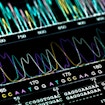
Sleep disruption may be an important contributor to the core neurodevelopmental, cognitive and social challenges emblematic of autism spectrum disorders (ASDs). As a tool to discover ASD gene networks, Ravi Allada plans to perform high-throughput in vivo behavioral screening assays of transgenic RNA interference libraries in both wild-type fruit flies and flies sensitized with disruptions of ASD risk genes. Specifically, Allada’s team plans to look at altered sleep patterns and circadian rhythms. Future studies of the underlying mechanisms for these genetic pathways may lead to a better understanding of ASD pathophysiology as well as the discovery of novel therapeutic targets.


